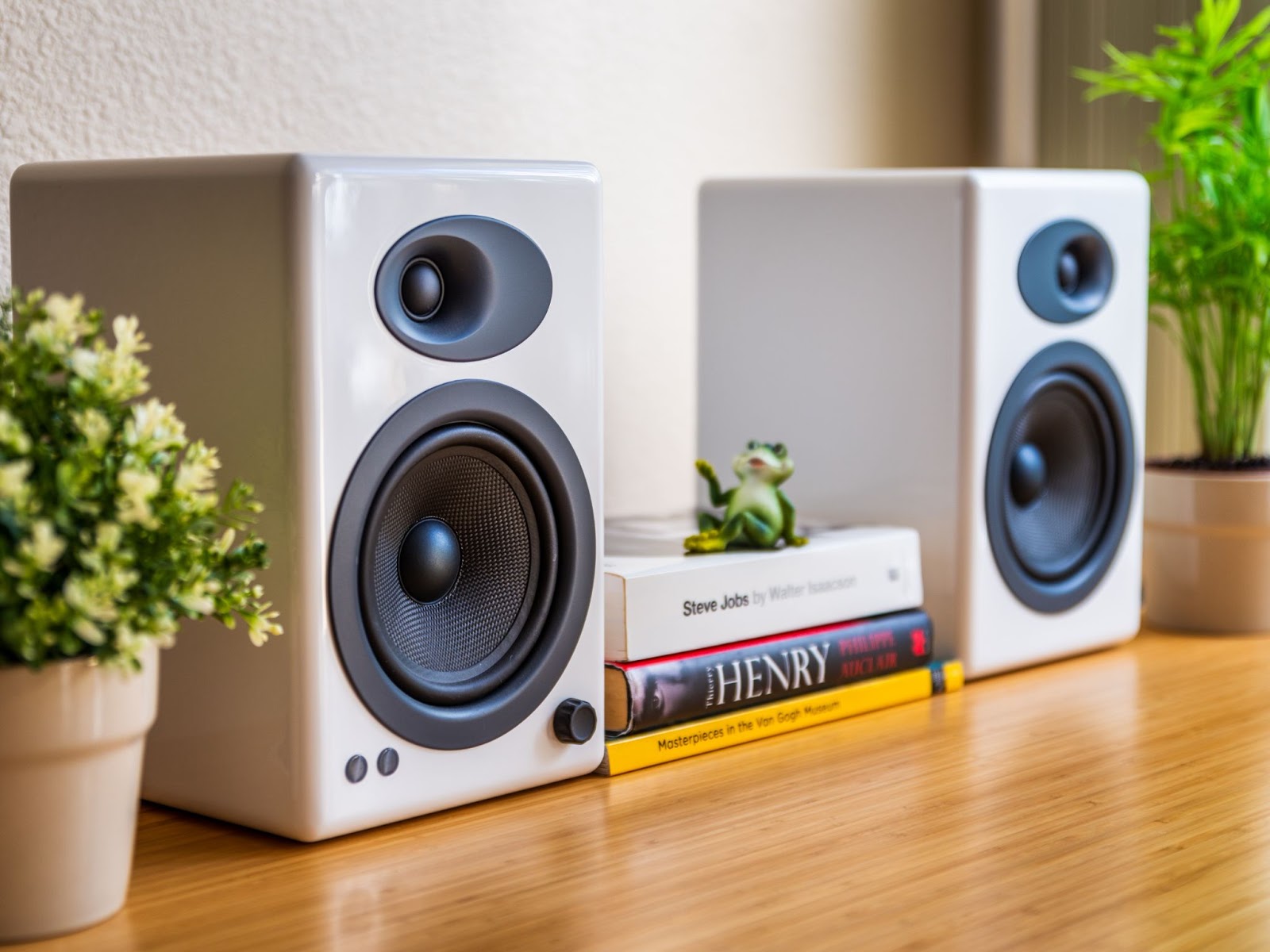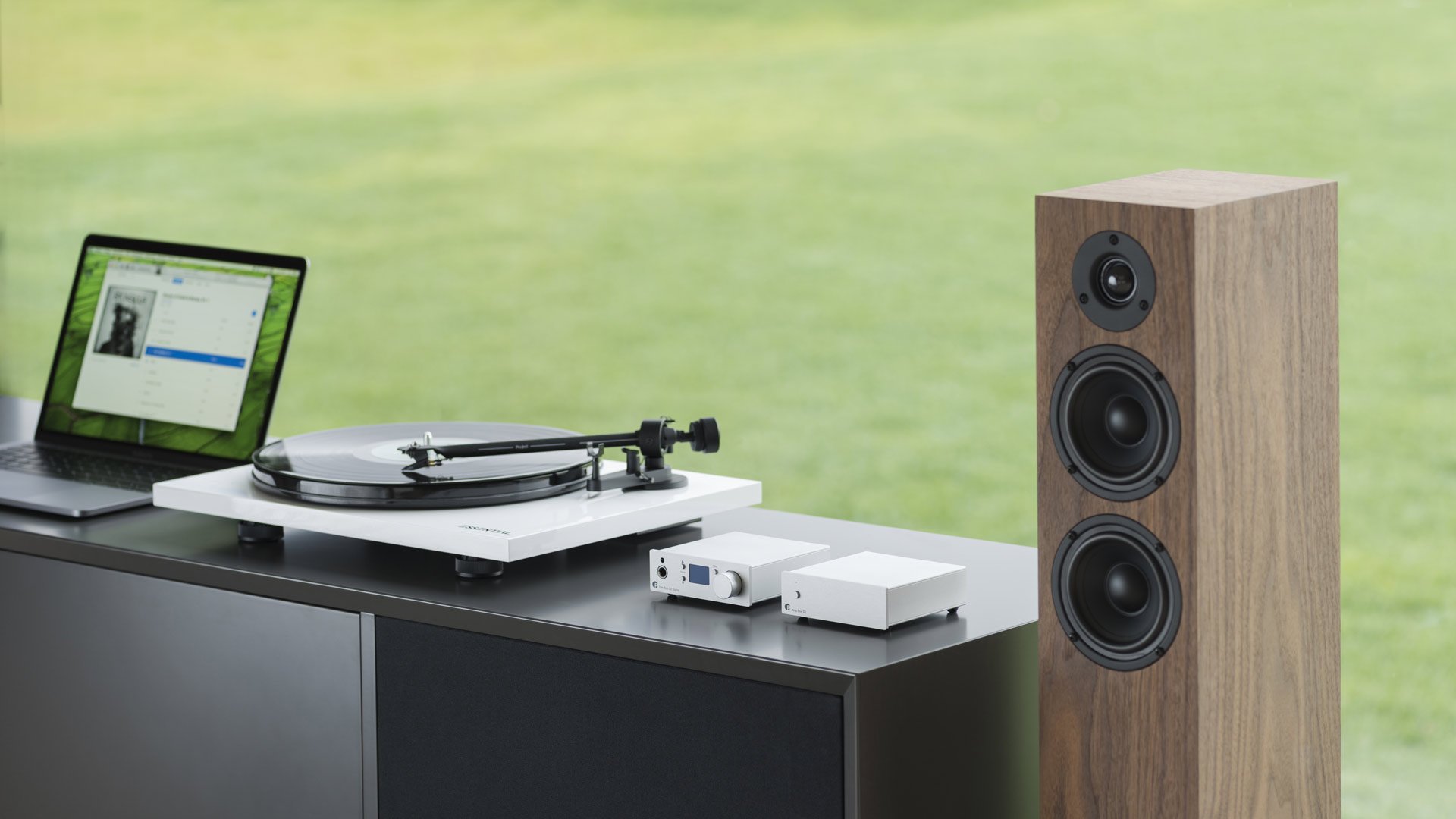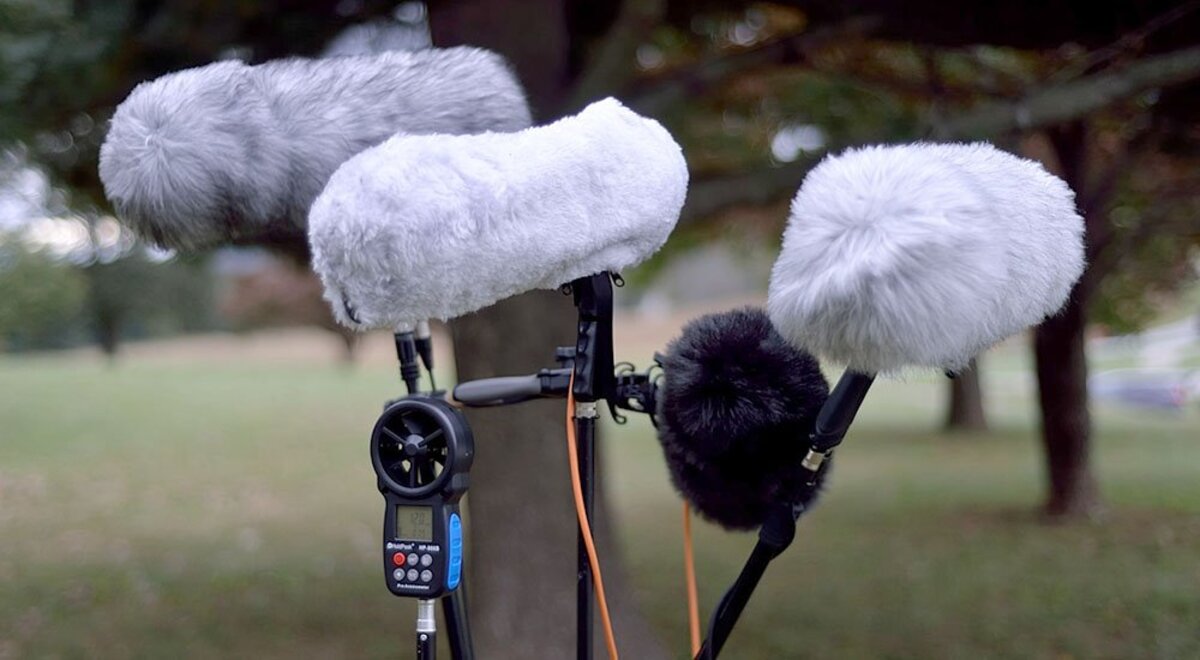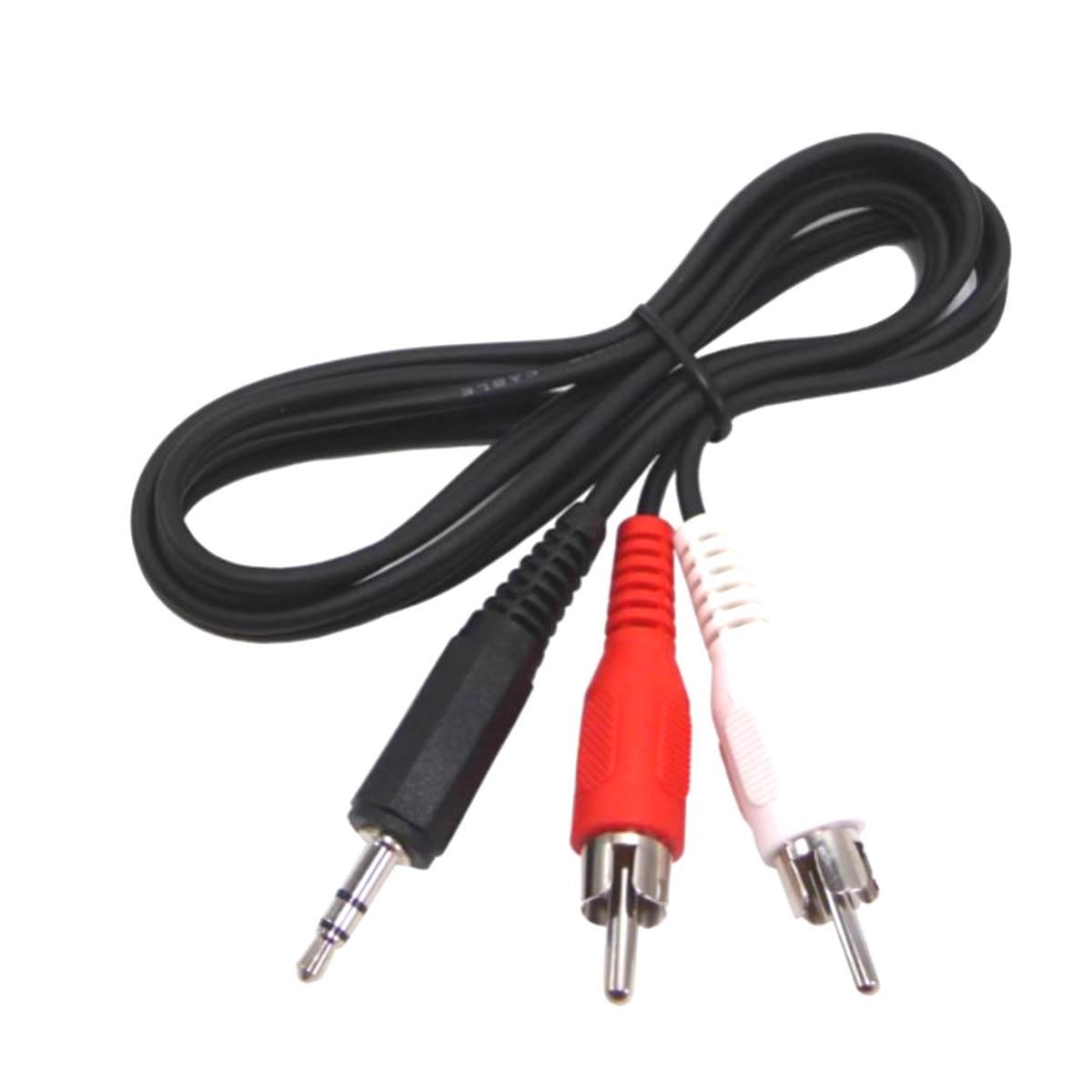Home>Production & Technology>Stereo>What Does A Stereo Preamp Do
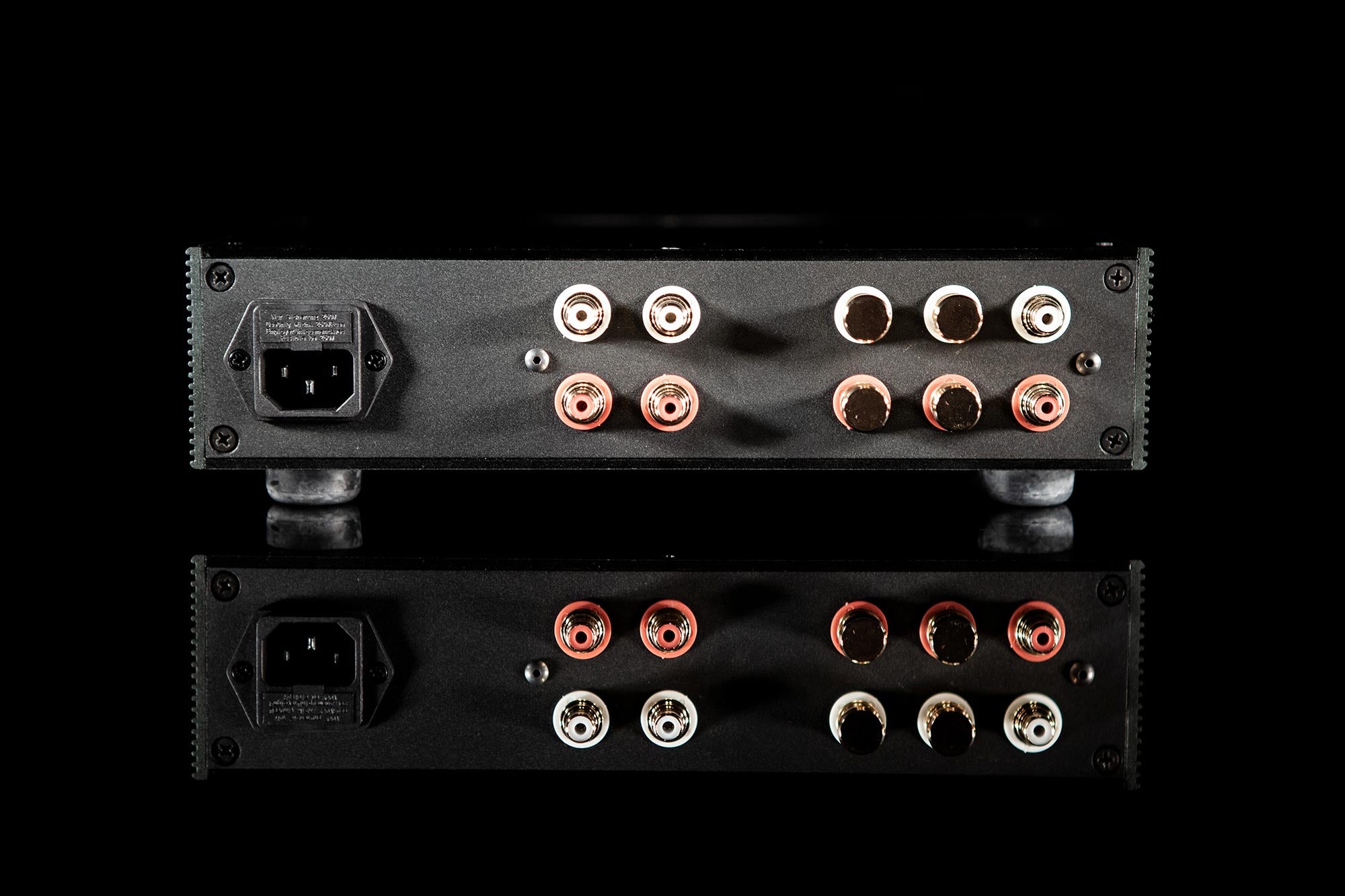

Stereo
What Does A Stereo Preamp Do
Modified: March 8, 2024
Find out what a stereo preamp does and how it enhances your audio experience. Discover the importance of a preamp in your stereo setup.
(Many of the links in this article redirect to a specific reviewed product. Your purchase of these products through affiliate links helps to generate commission for AudioLover.com, at no extra cost. Learn more)
Table of Contents
Introduction
Welcome to the world of high-fidelity sound! If you’re a music enthusiast or an audio professional, you’ve likely come across the term “stereo preamp” at some point. But what exactly does a stereo preamp do and why is it an essential component in any audio system? In this article, we’ll explore the ins and outs of stereo preamps, shedding light on their purpose, components, features, and benefits.
A stereo preamp, short for “stereophonic preamplifier,” is a device that plays a crucial role in audio systems. It serves as the command center for your audio setup, handling the delicate task of amplifying audio signals to a level suitable for further processing or powering your speakers. While the function of a stereo preamp may seem simple on the surface, its impact on the overall sound quality and performance of your system is significant.
Whether you’re a music lover looking to enhance your listening experience or a professional audio engineer striving for pristine sound reproduction, understanding the importance of a stereo preamp is essential. It acts as the intermediary between your audio sources, such as CD players, turntables, and computers, and your power amplifier or active speakers. It allows you to control the volume, tone, and balance of your audio signals, ensuring optimal sound quality and the ability to customize the audio output to your liking.
Now that we have a general understanding of its purpose, let’s delve deeper into the components and features of a stereo preamp that make it an indispensable tool for any audiophile or audio professional. We’ll also explore the benefits of using a stereo preamp and how it works in conjunction with other audio equipment.
Definition of Stereo Preamp
A stereo preamp, also known as a preamplifier or preamp, is a device that processes low-level audio signals and prepares them for further amplification or playback through speakers or headphones. It acts as the control center for your audio system, providing functions such as volume control, equalization, and source selection.
The primary function of a stereo preamp is to amplify weak audio signals received from various sources, such as CD players, turntables, and media players. These signals are typically too faint to be fed directly into a power amplifier or active speakers, which require a stronger input to produce audible sound. The preamp boosts the signal to a level that can be effectively amplified.
Additionally, a stereo preamp offers a range of features to optimize the audio signal. This includes tone control, which allows you to adjust the bass, mid, and treble frequencies to achieve the desired sound balance. Some preamps also offer a balance control, which adjusts the levels between the left and right channels, ensuring a balanced stereo image. Furthermore, advanced preamps may have built-in phono stages for turntables, headphone outputs, and digital inputs for connecting to modern devices.
Another important function of a stereo preamp is source selection. It provides multiple inputs, such as analog RCA, digital optical, or USB, allowing you to connect various audio sources simultaneously. This means you can easily switch between different devices without having to constantly disconnect and reconnect cables. The preamp acts as a hub, directing the selected audio source to the amplifier or active speakers.
In summary, a stereo preamp serves as the control center for your audio system, amplifying weak audio signals, providing tone control and balance adjustments, and allowing you to easily switch between different audio sources. Its versatile functionality and essential role in shaping the audio signal make it a vital component in any high-quality audio setup.
Purpose of a Stereo Preamp
The purpose of a stereo preamp is multifaceted, encompassing a range of crucial functions that contribute to the overall audio experience. Let’s explore the primary purposes of a stereo preamp in more detail.
One of the key purposes of a stereo preamp is signal amplification. Audio signals coming from various sources, such as turntables, CD players, or streaming devices, are often weak and require amplification before they can be played through speakers or headphones. The preamp boosts these low-level signals to a more robust level, ensuring optimal performance and clarity in sound reproduction.
In addition to amplification, a stereo preamp provides control over the audio signal. It allows you to adjust the volume, ensuring that the sound is neither too soft nor too loud. This control is essential for creating a balanced listening experience and preventing any distortion or clipping that may occur if the signal is pushed too far beyond its limits.
Furthermore, a stereo preamp offers equalization capabilities, commonly known as tone control. This feature enables you to shape the sound by adjusting the bass, midrange, and treble frequencies according to your preferences. It empowers you to tailor the audio output to suit different genres of music, personal preferences, and the acoustic characteristics of your listening environment.
Another purpose of a stereo preamp is to provide source selection. With multiple input options, such as RCA, digital optical, or USB, the preamp allows you to connect various audio sources simultaneously. This flexibility enables you to switch effortlessly between different devices without the hassle of constantly reconfiguring cables. Whether you want to switch from listening to vinyl to playing music from your smartphone, the preamp makes it a smooth transition.
Additionally, some stereo preamps may include additional features such as built-in phono stages for turntables, headphone outputs for private listening, and digital inputs for connecting to modern devices. These additional functionalities enhance the versatility of the preamp and make it a central hub for your entire audio system.
In summary, the purpose of a stereo preamp is to amplify audio signals, provide control over the sound, offer source selection capabilities, and potentially include additional features for added convenience and flexibility. It acts as a crucial intermediary between your audio sources and the amplifier or speakers, ensuring optimal sound quality and a customizable listening experience.
Components and Features of a Stereo Preamp
A stereo preamp consists of various components and features that work together to enhance the audio signal and provide control over your audio system. Understanding these components and features can help you make an informed decision when choosing a stereo preamp for your setup. Let’s explore them in more detail:
1. Input and Output Connections: A stereo preamp typically includes a range of input and output connections to accommodate various audio sources and destinations. Common input connections include analog RCA, XLR, and digital optical or coaxial inputs. Output connections may include RCA or XLR outputs for connecting to amplifiers or active speakers.
2. Volume Control: The volume control enables you to adjust the loudness of the audio output. It can be in the form of a knob, buttons, or a remote control, allowing you to fine-tune the volume to your desired level.
3. Tone Control: Many stereo preamps feature tone control options, allowing you to adjust the bass, midrange, and treble frequencies of the audio signal. This feature provides flexibility to tailor the sound according to your preferences and the characteristics of your listening environment.
4. Balance Control: The balance control allows you to adjust the level of the audio signal between the left and right channels. This feature ensures a balanced stereo image and eliminates any imbalances in sound perception.
5. Source Selection: A stereo preamp allows you to connect multiple audio sources simultaneously and select the source you want to listen to. This convenience eliminates the need to constantly switch cables and allows for seamless transitions between different sources.
6. Phono Stage: Some stereo preamps include a built-in phono stage, also known as a phono preamp, specifically designed for connecting and amplifying the signal from a turntable. This feature is essential for vinyl enthusiasts who want to enjoy their record collection with optimal sound quality.
7. Headphone Output: Many stereo preamps offer a dedicated headphone output, allowing you to listen to your audio privately without disturbing others. This output is especially useful for late-night listening sessions or when you prefer a more intimate listening experience.
8. Codec Support: Some stereo preamps include built-in digital-to-analog converters (DACs) and support various audio codecs, such as PCM or DSD. This feature ensures high-quality digital audio playback and compatibility with different digital audio formats.
9. Remote Control: A remote control can be a handy feature, allowing you to control the stereo preamp’s functions from a distance. This convenience eliminates the need to physically access the preamp to make adjustments.
10. Build Quality and Design: The overall build quality and design of the stereo preamp play a crucial role in its durability, aesthetics, and integration into your audio setup. Look for preamps that feature sturdy construction and a design that complements your personal taste.
In summary, a stereo preamp comprises a range of components and features, including input and output connections, volume and tone control, source selection options, phono stages, headphone outputs, codec support, remote control, and build quality. These elements work together to amplify and enhance audio signals, provide control over the sound, and contribute to the overall functionality and versatility of your audio system.
Benefits of a Stereo Preamp
A stereo preamp brings numerous benefits to your audio system, enhancing the overall listening experience and allowing for customizability. Let’s explore some of the key advantages of incorporating a stereo preamp into your setup:
1. Signal Amplification: A stereo preamp boosts weak audio signals to a level suitable for amplification, ensuring optimal performance and clear sound reproduction. This amplification allows you to unleash the full potential of your audio sources and experience the rich details and nuances of your music.
2. Enhanced Sound Control: With a stereo preamp, you have precise control over the volume, tone, and balance of the audio signal. This level of control empowers you to fine-tune the sound according to your preferences and adapt it to different musical genres or listening environments. Whether you prefer a punchy bass or a more balanced sound, a preamp gives you the flexibility to shape your audio experience.
3. Source Flexibility: A stereo preamp offers multiple input connections, allowing you to connect various audio sources simultaneously. This versatility enables you to switch seamlessly between sources without the hassle of reconnecting cables. Whether you want to play music from your turntable, CD player, or digital media player, the preamp acts as a hub and simplifies the process of switching between devices.
4. Improved Signal Integrity: Quality stereo preamps are designed with utmost care to minimize interference and distortion, preserving the integrity of the audio signal. By maintaining the integrity of the signal, a preamp ensures accurate and faithful sound reproduction, allowing you to enjoy your music in its purest form.
5. Phono Stage for Vinyl Playback: For vinyl enthusiasts, a stereo preamp with a built-in phono stage is indispensable. The phono stage amplifies the tiny electrical signals produced by a turntable’s cartridge, making it compatible with your audio system. This feature ensures optimal sound quality and fidelity when playing vinyl records.
6. Headphone Listening: Many stereo preamps include a dedicated headphone output, allowing you to enjoy private listening without disturbing others. Whether you prefer late-night listening sessions or desire a more focused and intimate audio experience, the headphone output of a preamp provides convenience and flexibility.
7. Improved System Integration: A stereo preamp acts as the control center for your audio system, facilitating seamless integration between your audio sources, amplifiers, and speakers. It simplifies the audio chain and ensures compatibility between different components, resulting in a cohesive and optimized audio system.
8. Room for Expansion: Investing in a stereo preamp provides future-proofing for your audio setup. As your audio needs evolve or new technologies emerge, a preamp offers the flexibility to accommodate these changes. You can easily connect and integrate new devices, such as digital media players or streaming devices, to adapt to the evolving audio landscape.
9. Customizable Aesthetics: Many stereo preamps are designed with aesthetics in mind, featuring sleek and stylish designs that complement your audio system setup. The ability to choose a preamp that matches your personal style adds a touch of customization and enhances the overall visual appeal of your listening space.
In summary, a stereo preamp offers a range of benefits, including signal amplification, enhanced sound control, source flexibility, improved signal integrity, phono stage for vinyl playback, headphone listening capabilities, improved system integration, room for expansion, and customizable aesthetics. By incorporating a stereo preamp into your audio setup, you can elevate your listening experience and tailor it to your unique preferences and requirements.
How a Stereo Preamp Works
A stereo preamp plays a crucial role in the audio signal chain, acting as the intermediary between your audio sources and the amplifier or speakers. Understanding how a stereo preamp works is essential for comprehending its function and the impact it has on your audio system. Let’s dive into the inner workings of a stereo preamp:
1. Input Signal Reception: The stereo preamp receives audio signals from various sources, such as CD players, turntables, and media players. These signals can be in analog or digital form, depending on the source. The preamp’s input section is designed to accommodate different types of connections, such as analog RCA, XLR, or digital optical, ensuring compatibility with a wide range of audio equipment.
2. Amplification: The primary function of a stereo preamp is to amplify the incoming audio signals. The preamp employs internal circuitry, often including vacuum tubes or solid-state components, to boost the weak signals to a level suitable for further processing or powering speakers. This amplification stage ensures that the audio signal is sufficiently strong to be faithfully reproduced without distortion.
3. Tone Control and Equalization: Many stereo preamps provide tone control options, allowing you to adjust the bass, midrange, and treble frequencies of the audio signal. This feature enables you to fine-tune the sound according to your preferences and the characteristics of the audio content. Additionally, preamps may include equalization circuits that further shape the frequency response to optimize the audio output.
4. Volume Control: A stereo preamp allows you to adjust the volume of the audio signal before it is sent to the power amplifier or speakers. The volume control can be in the form of a knob, buttons, or a remote control, allowing you to make precise adjustments to the loudness of the sound. This control ensures that the audio output is at an optimal level and suits your listening preferences.
5. Source Selection: The stereo preamp provides the ability to choose between different audio sources connected to it. This feature allows you to select the specific source you want to listen to and directs that audio signal to the amplifier or speakers. The preamp acts as a hub, enabling seamless switching between various audio sources without the need for frequent cable swapping.
6. Output Signal: After the audio signal has been amplified and adjusted, the stereo preamp outputs the signal through its output connections, such as analog RCA or XLR outputs. These connections carry the amplified and processed signal to the power amplifier or active speakers, which then drive the speakers or headphones to produce sound.
7. Control and Integration: Some modern stereo preamps may feature additional control options and integration capabilities. These can include remote control functionality, digital inputs for connecting to computers or digital sources, and even network connectivity for streaming audio content. These advanced features provide convenience and enhance the overall functionality of the stereo preamp.
In summary, a stereo preamp receives audio signals from different sources, amplifies them to a suitable level, provides tone control and equalization options, allows for volume adjustments, enables source selection, and outputs the processed signal to the power amplifier or speakers. By understanding how a stereo preamp works, you can appreciate the critical role it plays in shaping and optimizing the audio signal for an exceptional listening experience.
Different Types of Stereo Preamps
The world of stereo preamps offers a variety of options to suit different audio setups and preferences. Understanding the different types of stereo preamps available can help you choose the one that best fits your needs. Let’s explore some common types of stereo preamps:
1. Analog Stereo Preamps: Analog stereo preamps process audio signals using analog circuitry. They often feature components such as vacuum tubes or solid-state transistors, which impart a unique sonic character to the audio. Analog preamps are favored by audiophiles for their warm and natural sound reproduction.
2. Digital Stereo Preamps: Digital stereo preamps convert analog audio signals into digital form for processing. They harness the power of digital signal processing (DSP) to provide precise control over the audio signal. Digital preamps often offer advanced features such as digital equalization, room correction, and advanced connectivity options.
3. Hybrid Stereo Preamps: Hybrid stereo preamps combine the best of both analog and digital technologies. They feature a combination of analog and digital circuitry, allowing for the warm and natural sound characteristics of analog components while offering the flexibility and advanced functionality of digital processing. Hybrid preamps offer a balanced approach to audio signal processing.
4. Integrated Amplifier with Preamp: Some stereo preamps are integrated into amplifiers, creating a single unit commonly known as integrated amplifiers. These devices combine the functionality of a preamp and a power amplifier in one chassis, simplifying the audio setup and offering a compact solution for those seeking convenience and space efficiency.
5. Tubes vs. Solid-State: Within the realm of analog preamps, there is a distinction between tube-based and solid-state preamps. Tube preamps are valued for their characteristic “tube sound,” which provides warmth, smoothness, and harmonic richness. Solid-state preamps, on the other hand, offer a clean, transparent, and accurate sound reproduction with excellent dynamic range and low distortion.
6. Phono Preamps: Phono preamps, also known as phono stages, are a specific type of stereo preamp designed to connect and amplify the signal from a turntable. They include a built-in phono stage that takes the low-level output from the turntable’s cartridge and amplifies it to a level suitable for further processing or powering speakers. Phono preamps are essential for vinyl enthusiasts looking to enjoy their record collection with optimal sound quality.
7. High-End Audiophile Preamps: High-end audiophile preamps are designed with meticulous attention to detail and precision engineering. They feature premium components, sophisticated circuitry, and extensive customization options. These preamps cater to the discerning audiophile who seeks the highest level of sonic performance and audio refinement.
It’s important to consider your specific audio requirements, preferences, and budget when choosing a stereo preamp. Whether you prefer the warmth of analog sound, the versatility of digital processing, or a combination of both, there are various options available to suit your needs and elevate your audio experience.
Tips for Choosing a Stereo Preamp
Choosing the right stereo preamp for your audio setup can greatly impact your listening experience. With numerous options available on the market, it’s important to consider several factors to ensure you select a preamp that meets your specific needs and preferences. Here are some tips to guide you during the selection process:
1. Consider Your Audio Set-Up: Assess your existing audio system and determine what features you require from a stereo preamp. Consider factors such as the number of audio sources you need to connect, whether you need phono stage support for turntables, or if you require specific connectivity options like digital inputs.
2. Set a Budget: Determine your budget range for a stereo preamp. Preamps can vary significantly in price, so having a clear budget in mind will help narrow down your options and prevent overspending.
3. Research and Compare: Conduct thorough research to compare the features, specifications, and user reviews of different preamps. Look for reputable brands known for their quality and reliability. Take note of the specific features that align with your requirements, such as the number of inputs and outputs, the availability of tone control or phono stage, and the overall build quality.
4. Audition Whenever Possible: If possible, audition the preamps you are considering before making a final decision. Listening to different preamps with your own music and speakers will allow you to evaluate their sonic characteristics and determine which one best suits your personal taste.
5. Consider Future Expansion: Think about your future audio needs and consider a preamp that can accommodate potential upgrades or changes in your system. Choose a preamp with ample input options and flexibility to connect different audio sources or devices as your setup evolves.
6. Check for Compatibility: Ensure that the preamp you choose is compatible with the rest of your audio equipment, including power amplifiers, speakers, and headphones. Check the input and output connections, as well as the impedance levels, to ensure optimal compatibility and avoid any impedance mismatches.
7. Consider Build Quality and Aesthetics: Take into account the build quality and aesthetics of the preamp. Look for well-built units that are durable and sturdy. Consider the design and appearance of the preamp to ensure it will integrate well with your existing setup and personal style.
8. Warranty and After-Sales Support: Check the warranty and after-sales support provided by the manufacturer or retailer. A reliable warranty ensures that you’re protected against any manufacturing defects or malfunctions, and good customer support can be invaluable in case you encounter any issues or have questions about your preamp.
By considering these tips, you can make a more informed decision when choosing a stereo preamp that best suits your audio needs, budget, and personal preferences. A well-chosen preamp will enhance your listening experience, allowing you to enjoy your favorite music with clarity, precision, and customization.
Conclusion
A stereo preamp is a vital component in any audio system, offering a range of benefits and functionalities that enhance your listening experience. Whether you’re an avid music lover or an audio professional, understanding the purpose, components, and features of a stereo preamp is essential in selecting the right one for your audio setup.
A stereo preamp serves as the control center of your audio system, amplifying weak audio signals, providing control over volume and tone, and allowing for seamless source selection. It ensures optimal signal integrity, allowing you to enjoy your music with clarity and depth.
When choosing a stereo preamp, consider factors such as your audio setup, budget, and desired features. Research and compare different options, audition when possible, and ensure compatibility with your existing equipment. Additionally, think about future expansion possibilities and prioritize build quality and aesthetics to create a cohesive and visually pleasing audio system.
Ultimately, investing in a high-quality stereo preamp adds depth, customization, and control to your audio experience. It allows you to tailor the sound according to your preferences and ensures that you enjoy the full potential of your audio sources, whether it’s vinyl records, digital files, or streaming music.
So, take the time to choose a stereo preamp that suits your needs and elevate your audio enjoyment to new heights. With the right stereo preamp as the heart of your system, you’ll immerse yourself in a world of high-fidelity sound and appreciate the intricate details of your favorite music like never before.


